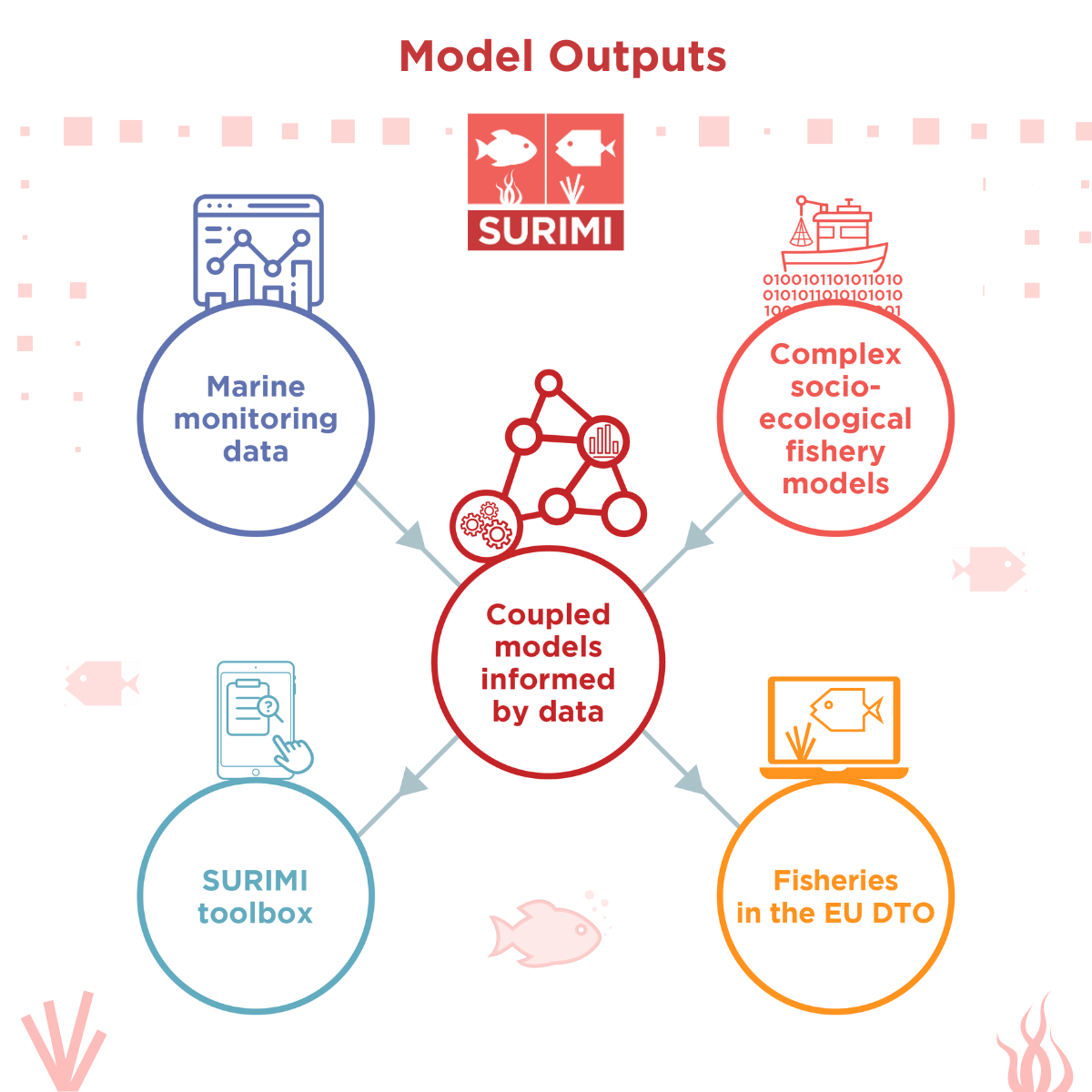Navigating the Future of Fisheries Management: Insights from the First SURIMI Stakeholder Workshop
On February 11th, 2024, SURIMI hosted the first of three stakeholder workshops to co-design socio-economic models for fisheries management that will be integrated into the European Digital Twin of the Ocean (EU DTO). The workshop brought together policymakers, industry representatives, scientists, and others to explore how modelling tools can support decision-making on fisheries management, policy, and conservation. Discussions focused on real-world “what-if” scenarios, helping stakeholders anticipate and navigate challenges like climate change, stock fluctuations, and regulatory impacts.
Bringing Stakeholders Together
At this workshop, discussions were driven by real-world priorities, shaping SURIMI’s models into cutting-edge tools for fisheries management. Stakeholders came together to share their needs and explore how these models can support decision-making. They were particularly interested in how SURIMI’s models will connect with other projects, contribute to stock assessments, and provide flexible, science-based decision support. There was also strong interest in how different SURIMI models—capturing ecological impacts, social dynamics, and management strategies—are integrated to provide a holistic perspective.
Through these workshops and the co-design of models, SURIMI is committed to broad stakeholder involvement, ensuring that small-scale fishers, producer representatives, and local communities have a voice in shaping tools that are not only scientifically rigorous but also practical, adaptable, and accessible. By developing interoperable socio-ecological models, SURIMI aims to bridge the gap between science, policy, and industry, paving the way for more sustainable and inclusive fisheries management.
The Models Supporting Fisheries Decision-Making
To address these challenges, the workshop introduced five key socio-ecological models from the SURIMI Toolbox:
- CMSY++: A stock assessment tool that helps manage fisheries in data-limited situations by estimating fish stock trends and sustainable catch limits.
- Ecopath with Ecosim (EwE): A model that simulates entire marine ecosystems, capturing interactions between species, human activities, and climate effects.
- POSEIDON: A model that predicts how fishers respond to regulations and economic incentives, helping policymakers design balanced management strategies.
- Value Chain Model: Traces the economic and social impact of fisheries policies, from fish landings to market distribution, employment, and food availability.
- System Dynamics Model (SDM): Fills socio-economic data gaps by modelling feedback loops between market prices, fishing effort, and regulations.

Integrating Models for Better Decision-Making
SURIMI’s strength lies in combining these models to provide a more complete picture. For example, linking CMSY++ with EwE helps predict how fish stocks affect ecosystems, while POSEIDON and the Value Chain Model reveal how economic pressures and regulations shape fishing behaviour. Together, these tools create realistic simulations that help stakeholders make informed decisions.
Next Steps: Co-Designing the Future of Fisheries Management
This workshop was the first step in ensuring that stakeholder perspectives shape these tools. Future sessions will refine model outputs, test real-world fisheries scenarios, and enhance usability. By working together, SURIMI aims to create scientifically robust, practical, and accessible tools that support sustainable fisheries.
Stay engaged, contribute your insights, and help shape the future of fisheries management. Sign up to the SURIMI Stakeholder Forum here.
Get involved with the co-creation of SURIMI tools
